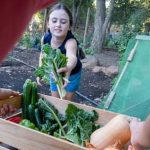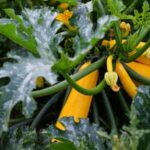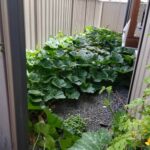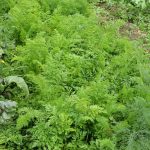Are you a first-time gardener looking to connect with nature and the food you eat? Growing vegetables at home can be a rewarding and fulfilling experience, even for beginners. The satisfaction of watching your plants grow and then enjoying the bountiful harvest is unmatched. In this section, we will explore the benefits of vegetable gardening for first-time gardeners and how it can be a great way to start your gardening journey.
When starting your vegetable garden, it’s important to consider factors such as your climate and growing zone. By choosing the right vegetables that are beginner-friendly and easy to maintain, you can set yourself up for success in your gardening endeavors. In this section, we will discuss how to determine which vegetables are best suited for your region and provide tips on selecting the right vegetables to grow in your first garden.
In addition to choosing the right vegetables, planning and preparing your garden is essential for a successful harvest. This includes finding the best location for your garden, ensuring good soil quality, and knowing how to prepare it for planting. By understanding these key elements of vegetable gardening, you can create an environment that promotes healthy plant growth and maximizes your chances of a successful harvest.
Choosing the Right Vegetables to Grow
Determining Your Climate and Growing Zone
Before you start planting your vegetable garden, it’s important to determine the climate and growing zone of your area. Different vegetables thrive in different conditions, so knowing your climate and growing zone will help you select the best vegetables for your garden.
You can easily find this information online or by asking experts at local nurseries or gardening centers. Understanding your climate and growing zone will ensure that you choose vegetables that are well-suited for your specific environment, increasing the chances of a successful harvest.
Identifying Beginner-Friendly Vegetables That Are Easy to Grow and Maintain
For first-time gardeners, it’s best to start with vegetables that are low-maintenance and relatively easy to grow. Some popular choices for beginner-friendly vegetables include tomatoes, lettuce, carrots, radishes, peas, green beans, and cucumbers. These vegetables are not only easy to grow but also provide a rewarding harvest for novice gardeners.
They also offer the opportunity to learn valuable gardening skills without feeling overwhelmed by more challenging crops. By starting with these beginner-friendly options, you’ll be able to build confidence in your gardening abilities and enjoy a successful first experience with growing your own vegetables.
Once you’ve determined your climate and growing zone and identified beginner-friendly vegetables suited for first-time gardeners, you can begin planning which specific varieties of these vegetables you’d like to grow in your garden. Remember to consider factors such as available space, sunlight exposure, and personal preferences when selecting the right vegetables for your vegetable garden.
With careful planning and consideration, you’ll set yourself up for a fruitful gardening experience with an abundant harvest of fresh, home-grown produce.
Planning and Preparing Your Garden
When it comes to planning and preparing your vegetable garden, one of the most important factors to consider is the location. Vegetables typically require at least 6 hours of sunlight per day, so it’s crucial to choose a spot in your yard that receives adequate sunlight. Take note of any trees or structures that may cast shadows over your garden and opt for a sunny, open area.
In addition to sunlight, you’ll also want to consider access to water. It’s best to position your garden in an area where you can easily water your plants without having to lug heavy buckets across the yard. If possible, place your garden close to a water source such as a hose spigot.
The Importance of Soil Quality and How to Prepare It for Planting
Once you’ve chosen the perfect location for your vegetable garden, it’s time to assess the quality of the soil. Healthy soil provides essential nutrients for plant growth and helps retain moisture, so it’s important to test and improve your soil if necessary.
Consider conducting a soil test to determine its pH level and nutrient content. Many local agricultural extensions offer affordable soil testing services, or you can purchase DIY testing kits from garden centers. Based on the results of your soil test, you may need to amend your soil with organic matter (such as compost or manure) or adjust its pH with lime or sulfur.
In addition to improving the quality of your soil, you’ll also want to prepare the planting area by removing any weeds, rocks, or debris and loosening the soil with a tiller or garden fork. Adequately preparing the soil sets the stage for healthy plant growth and successful vegetable cultivation.
Essential Tools and Supplies
As a first-time gardener, it’s important to have the necessary tools and supplies to ensure a successful vegetable garden. Here are some must-have items to have on hand:
1. Gardening Tools:
These basic gardening tools will help you with tasks such as planting, weeding, and pruning your vegetables.
2. Soil Amendments and Fertilizers:
Good soil is essential for healthy plant growth, so be sure to amend your soil with compost and organic fertilizers. Mulch can help retain moisture in the soil and suppress weed growth.
3. Pest Control Options:
Inevitably, you may encounter pests in your garden. Using natural pest control options such as neem oil and insecticidal soap can help protect your vegetables without harming the environment.
Having these essential tools and supplies will not only make gardening easier but also contribute to the success of your vegetable garden. As you gain experience, you may discover additional tools and supplies that suit your gardening style and specific crop needs.
Planting and Caring for Your Vegetables
When to Plant Your Vegetables
The timing of planting your vegetables can greatly affect their growth and success in your garden. It’s important to research the specific planting season for each vegetable based on your local climate and growing zone.
Some vegetables thrive in cooler temperatures and can be planted as soon as the danger of frost has passed, while others prefer the warmth of late spring or early summer. Pay attention to the recommended planting times for each variety to ensure a bountiful harvest.
Proper Watering and Maintenance
One of the most crucial aspects of caring for your vegetable garden is providing adequate water. Different vegetables have different water requirements, so it’s essential to understand the needs of each plant. Overwatering can lead to root rot, while underwatering can cause stunted growth and poor fruit development. Regular weeding is also necessary to prevent competition for nutrients and sunlight, helping your vegetables thrive.
Ensuring Healthy Plants
To promote healthy plant growth, it’s important to monitor your vegetable garden for signs of pests or diseases. Inspect your plants regularly for any abnormalities such as holes in leaves, discolored spots, or wilting. Implementing organic pest control methods like companion planting, neem oil sprays, or introducing beneficial insects can help keep unwanted visitors at bay. Additionally, providing appropriate support such as trellises for climbing plants will ensure proper air circulation and prevent mold or mildew issues.
By carefully tending to your vegetable garden with proper planting techniques and attentive care, you’ll create an environment where your vegetables can flourish and provide a bountiful harvest for you to enjoy.
Common Challenges and Solutions
One of the most common challenges that first-time vegetable gardeners face is dealing with pests and diseases in their garden. It can be disheartening to see your hard work being attacked by unwanted bugs or succumbing to plant diseases. However, there are several organic pest control options that you can use to protect your vegetables without resorting to harmful chemicals. For example, introducing beneficial insects like ladybugs or using neem oil can help keep pests at bay.
Another common issue that beginners encounter is troubleshooting problems such as yellowing leaves or stunted growth in their vegetable plants. This could be due to a variety of factors including nutrient deficiencies, overwatering, or poor soil quality. By closely monitoring your plants and addressing any issues promptly, you can prevent these problems from getting out of hand and ensure the health of your vegetable garden.
In addition to pests and plant problems, first-time gardeners may also struggle with understanding the specific needs of different vegetables in terms of sunlight, water, and spacing. It’s important to research each type of vegetable you plan to grow and understand its individual requirements for optimal growth. By taking the time to learn about the vegetables you are cultivating, you can increase your chances of a successful harvest.
| Vegetable | Growing Season |
|---|---|
| Tomatoes | Summer |
| Lettuce | Spring/Fall |
| Zucchini | Summer |
Harvesting and Enjoying the Fruits of Your Labor
When it comes to vegetable gardening, there is nothing quite as satisfying as harvesting and enjoying the fruits of your labor. For a first-time gardener, this can be an incredibly rewarding experience that truly solidifies the connection between you and the food you eat. Not only does it provide a sense of accomplishment, but it also allows you to savor the freshness and flavor of homegrown produce.
One of the most important aspects of harvesting your vegetables is knowing when they are ready to be picked. This varies depending on the type of vegetable, so it’s essential to do some research on each variety you’ve planted.
For example, tomatoes should be harvested when they are fully colored and have a slight give when gently squeezed. On the other hand, leafy greens like lettuce and spinach should be picked while the leaves are still tender and before they bolt.
Once you’ve harvested your bountiful crop, the possibilities for enjoying your vegetables are endless. Whether you choose to enjoy them fresh in salads or cooked in delicious recipes, there is no shortage of ways to savor your homegrown produce. From classic dishes like Caprese salad with freshly picked tomatoes and basil to more elaborate culinary creations, your harvest will undoubtedly elevate your meals with its unmatched freshness and quality.
| Vegetable | Harvesting Time |
|---|---|
| Tomatoes | Fully colored with slight give when gently squeezed |
| Lettuce & Spinach | Picked while leaves are still tender and before they bolt |
Tips for Year-Round Vegetable Gardening
In conclusion, gardening can be a rewarding and fulfilling experience for first-time gardeners. Not only does it provide an opportunity to connect with nature and the food we eat, but it also offers numerous benefits for our physical and mental well-being. By growing vegetables at home, beginners can gain a sense of accomplishment and pride in producing their own food.
When choosing the right vegetables to grow, it’s important to consider your climate and growing zone to ensure the best chances of success. Additionally, selecting beginner-friendly vegetables that are easy to grow and maintain can help build confidence for new gardeners. Planning and preparing your garden involves finding the best location with adequate sunlight and good soil quality, as well as investing in essential gardening tools and supplies.
As you begin planting and caring for your vegetables, understanding when and how to plant different varieties is crucial for a successful harvest. Proper watering, weeding, and pest control are also important factors in maintaining the health of your plants.
And while challenges such as pests, diseases, or common problems may arise, there are solutions available to help troubleshoot these issues. Finally, once your vegetables have reached maturity, harvesting them can be a rewarding experience that leads to delicious recipes made from the fruits of your labor.
In addition to understanding the basics of vegetable gardening, exploring options for extending your growing season through year-round gardening is beneficial. From utilizing techniques like succession planting or cover cropping to preserving your harvest through canning, freezing, or pickling, there are plenty of ways to enjoy fresh homegrown produce throughout the year.
With patience, dedication, and a willingness to learn from both successes and failures, first-time gardeners can develop their skills and reap the many rewards of cultivating their own vegetables at home.
Frequently Asked Questions
What Vegetables Are Best for Beginner Gardeners?
For beginner gardeners, it’s best to start with easy-to-grow vegetables such as tomatoes, zucchini, green beans, lettuce, and radishes. These vegetables are relatively low-maintenance and can thrive in different growing conditions.
What Vegetables Should I Start Growing First?
When starting a vegetable garden for the first time, it’s recommended to begin with vegetables like leafy greens (lettuce, spinach), root vegetables (carrots, radishes), and herbs (basil, mint). These plants are relatively easy to grow and can provide a good harvest for beginners.
How Do I Start Gardening for the First Time?
To start gardening for the first time, consider key factors like sunlight, soil quality, watering needs, and plant selection. Begin by choosing a suitable location for your garden bed or containers, preparing the soil, selecting the right plants for your climate, and providing them with proper care such as regular watering and fertilization.
Additionally, reading up on gardening techniques and seeking advice from experienced gardeners can be helpful in getting started on the right foot.

If you’re looking to get into vegetable gardening, or are just looking for some tips on how to make your current garden better, then you’ve come to the right place! My name is Ethel and I have been gardening for years. In this blog, I’m going to share with you some of my best tips on how to create a successful vegetable garden.





